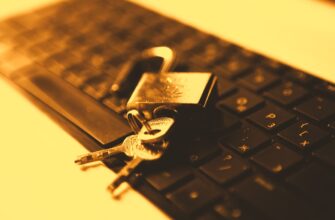## Why Private Key Security Is Non-Negotiable
Your private key is the ultimate gatekeeper to your cryptocurrency holdings, digital identity, and sensitive data. Unlike passwords, private keys are irreplaceable cryptographic strings that prove ownership of blockchain assets. Lose control of this key, and you permanently lose access to your funds. Hackers constantly target private keys through phishing, malware, and social engineering. This step-by-step guide delivers actionable strategies to fortify your private key against modern threats.
## Understanding Private Key Vulnerabilities
Before implementing safeguards, recognize common attack vectors:
* **Phishing Scams**: Fake websites mimicking wallets/exchanges
* **Malware**: Keyloggers or clipboard hijackers stealing copied keys
* **Physical Theft**: Unsecured written/printed keys
* **Cloud Risks**: Storing keys in email or unencrypted drives
* **Human Error**: Accidental sharing or misplacement
## Step-by-Step: Guarding Your Private Key Safely
Follow this sequential protocol for maximum security:
1. **Generate Offline**: Create keys on an air-gapped device (never internet-connected computer) using trusted open-source software like Electrum or BitKey.
2. **Immediate Encryption**: Encrypt the key using AES-256 encryption tools (e.g., VeraCrypt) before storage. Never store raw plaintext keys.
3. **Cold Storage Implementation**:
– Write encrypted key on fireproof/waterproof titanium plates (e.g., Cryptosteel)
– Store in multiple geographically dispersed safes or bank vaults
– Avoid paper which degrades and burns easily
4. **Enable Multi-Signature Wallets**: Require 2-3 physical devices to authorize transactions, ensuring no single key compromises assets.
5. **Isolate Transaction Devices**: Use a dedicated smartphone/laptop solely for crypto transactions, with no email/social media apps installed.
6. **Shamir Backup**: Split your key into 3-5 encrypted shards using tools like Trezor Model T. Store shards with trusted parties; recover with any 3 fragments.
## Advanced Protection Tactics
Supplement core steps with these measures:
* **Hardware Wallets**: Use Ledger or Trezor devices – keys never leave the secure chip
* **Passphrase Protection**: Add a 25th word (BIP39) to your seed phrase for secondary encryption
* **Transaction Whitelisting**: Restrict withdrawals to pre-approved wallet addresses only
* **Blind Signing Disabled**: Prevent malicious contracts by enabling “full transaction signing” in wallet settings
* **Regular Audits**: Quarterly verification of backup integrity and access logs
## Critical Mistakes to Eliminate
Avoid these catastrophic errors:
– ❌ Taking screenshots or digital photos of keys
– ❌ Storing keys in password managers or cloud notes
– ❌ Entering keys on public/shared computers
– ❌ Sharing keys via messaging apps or email
– ❌ Using unverified wallet software from app stores
## Frequently Asked Questions
**Q: Can I recover a lost private key?**
A: No. Private keys are mathematically irrecoverable. This is why decentralized systems work – but also why backups are essential.
**Q: Are hardware wallets foolproof?**
A: They significantly reduce risk but aren’t invincible. Physical theft, supply chain attacks, or approving malicious transactions still pose threats. Always combine with backups.
**Q: How often should I rotate private keys?**
A: Only if compromised. Transfer assets to a new wallet immediately after suspected exposure. Routine rotation increases human error risks.
**Q: Is memorizing my key a good backup?**
A: Dangerous. Human memory fails under stress. Use physical encrypted backups as primary, with memorization only as temporary supplemental measure.
**Q: Can I insure my cryptocurrency against theft?**
A: Yes, through specialized insurers like Coincover or custodial solutions, but premiums are high (3-5% annually). Self-custody remains safest with proper key management.
## Final Security Mindset
Guarding private keys demands perpetual vigilance. Treat your key like a priceless artifact: isolate it, encrypt it, and distribute backups intelligently. By methodically implementing these steps, you create layered defenses that thwart both digital intruders and physical disasters. Remember – in blockchain systems, ultimate security responsibility rests with you.








